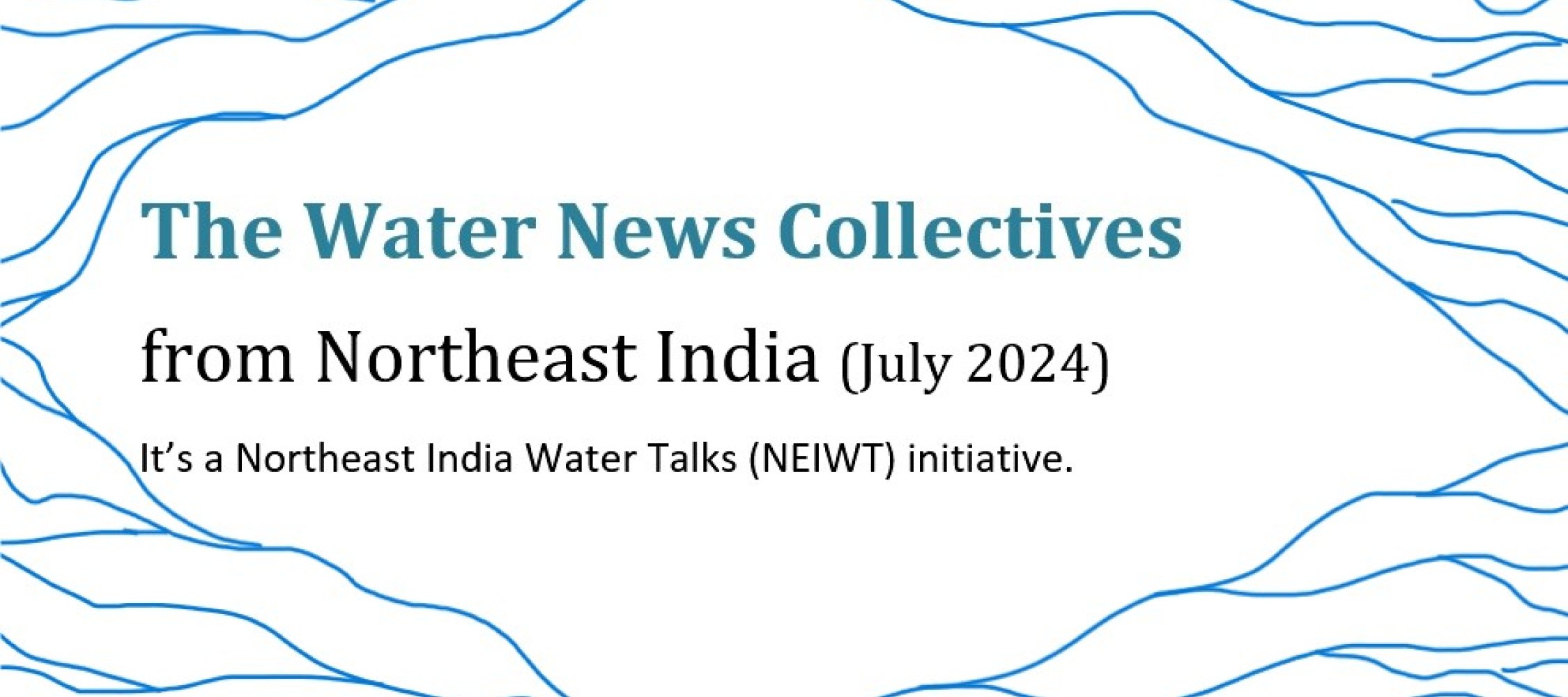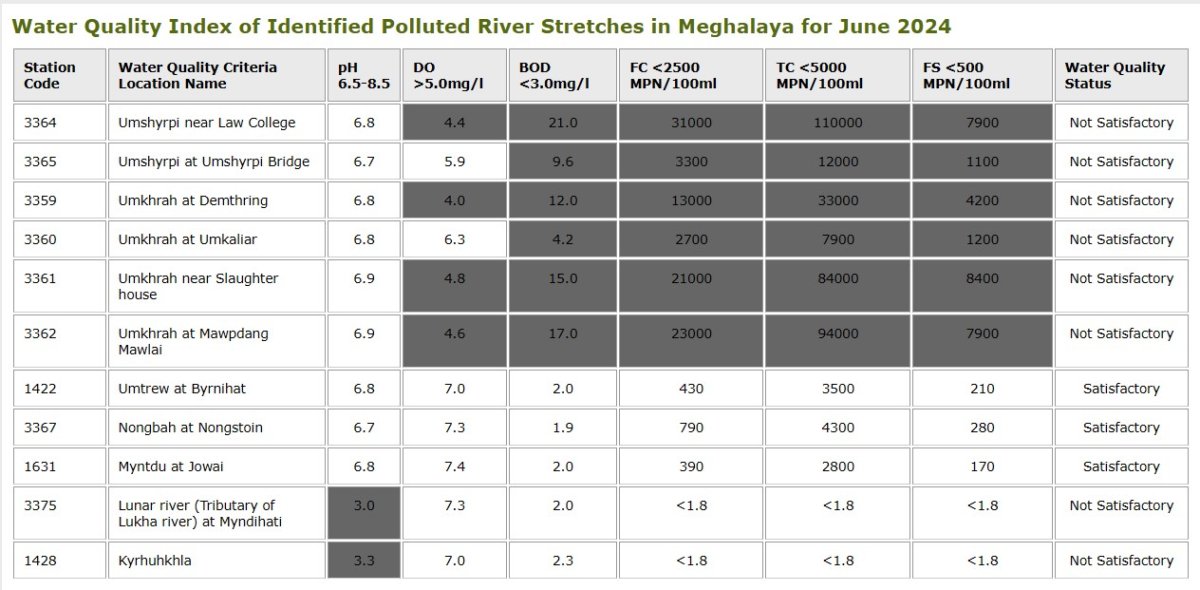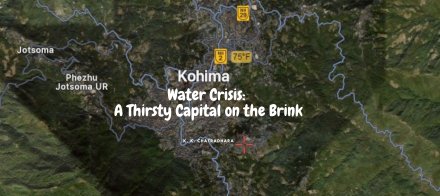 |
Arunachal Pradesh:
Landslips Sever Communication and Cause Devastation in Arunachal Pradesh:
Recent landslips triggered by heavy rains in Arunachal Pradesh have severely disrupted surface communication to several districts, affecting over 72,900 people across 257 villages since April. The State Disaster Management Department reported a tragic incident in Shi-Yomi district where a person was buried due to landslips on July 5, adding to the toll of four fatalities from natural calamities. Vital routes like Tezu-Hayuliang and Dari-Chambang remain blocked, along with NH-513 in East Siang district, exacerbating transportation challenges. Infrastructure damage includes roads, bridges, power lines, and water supply systems, with on-going efforts to restore essential services amidst a heightened state of emergency.
Source:
- Arunachal Pradesh: Landslips and floods disrupt communication, causing extensive damage to infrastructure - The Hindu
- https://m.economictimes.com/news/india/flood-situation-remains-grim-in-arunachal-pradesh-over-60000-people-affected/articleshow/111451543.cms
- https://www.business-standard.com/india-news/landslides-disrupt-surface-communication-to-several-arunachal-districts-124070800188_1.html
Civil Society Urges Reconsideration of Hydropower Expansion in Arunachal Pradesh:
Civil society groups, including Siang Indigenous Farmers Forum and Dibang Resistance, have called on the Union power ministry to reassess its strategy on increasing dam construction and hydropower capacity in Arunachal Pradesh. They voiced concerns over the environmental impact of the proposed 11,000 MW Upper Siang Multipurpose Storage project, citing potential adverse effects. Activist Ebo Mili's detention before a public meeting in Itanagar sparked controversy, with claims that it aimed to prevent protests against the project. The groups emphasized local opposition and the downstream impact on Assam, urging a halt to river exploitation for sustainable solutions.
Source:
Assam:
Assam Flood Situation Remains Critical Despite Receding Waters:
Officials have reported that although water levels have begun to recede in several parts of Assam as of July 13, the flood situation remains severe. The Regional Meteorological Centre in Guwahati forecasts moderate to heavy rainfall in various districts, posing continued flash flood risks in Arunachal Pradesh, southern Assam, and Meghalaya. According to the Assam State Disaster Management Authority, recent floods have claimed seven more lives, affecting over 12.33 lakh people across 23 districts. Majuli, Dhubri, Cachar, and Golaghat are among the worst-hit districts, with thousands displaced and extensive damage to infrastructure and crops. Relief efforts are underway with hundreds of relief camps operational, providing assistance to the affected population, including food distribution and shelter management.
Source:
Assam Floods:
The floods in Assam have brought immense devastation across the state, affecting a staggering number of people and wildlife. Over 12 lakh individuals in 24 districts are grappling with the aftermath, according to the Assam State Disaster Management Authority (ASDMA). The death toll has tragically risen by seven, reaching a total of 64 fatalities.
In a touching act of bravery, a man rescued an elephant calf from a flooded river, though efforts to locate its mother have been unsuccessful. Meanwhile, the flood crisis has particularly impacted Kaziranga National Park, where wildlife losses have been reported alongside the rising human toll.
The situation continues to worsen, with approximately 23.9 lakh people affected across 3,535 villages, prompting over 50,000 individuals to seek refuge in shelters statewide. The floods have led to eight more deaths, bringing the toll to 46, and have affected over 16 lakh people.
Yearly, Assam faces these catastrophic floods, inundating villages and threatening wildlife sanctuaries like Kaziranga. The floods have displaced lakhs, necessitating large-scale rescue and relief operations, including the deployment of the Army.
Throughout this crisis, large portions of Kaziranga National Park have been submerged, forcing authorities to relocate animals to safer areas. With the situation deteriorating further, thousands have been evacuated to relief camps as the floodwaters show no signs of receding.
In summary, the floods in Assam have unleashed widespread havoc, affecting both human lives and natural habitats, requiring sustained efforts for rescue, relief, and rehabilitation.
Source:
- https://indianexpress.com/article/north-east-india/assam-flood-over-12-lakh-affected-in-24-districts-7-more-dead-9449990/
- https://indianexpress.com/article/trending/trending-in-india/assam-man-rescues-elephant-calf-flood-swollen-river-9449261/
- https://indianexpress.com/article/north-east-india/assam-flood-crisis-death-toll-climbs-wildlife-losses-kaziranga-9437919/
- https://indianexpress.com/article/north-east-india/assam-floods-6-more-die-toll-rises-to-58-9437587/
- https://indianexpress.com/article/opinion/editorials/why-assam-keeps-flooding-9435619/
- https://indianexpress.com/article/north-east-india/flood-situation-worsens-in-assam-eight-deaths-take-toll-to-46-over-16-lakh-affected-9431545/
- https://indianexpress.com/photos/india-news/assam-floods-news-landslides-rainfall-damage-7922334/
- https://indianexpress.com/photos/india-news/assam-floods-photos-heavy-rains-brahmaputra-7487385/
- https://indianexpress.com/photos/india-news/assam-floods-villages-inundated-kaziranga-hit-by-deluge-6514823/
- https://indianexpress.com/photos/india-news/lakhs-displaced-in-assam-floods-national-parks-hit-6505680/
- https://indianexpress.com/photos/india-news/assam-kaziranga-national-park-incessant-rains-floods-the-north-east-displaces-all-life-in-its-wake-4750022/
- https://indianexpress.com/photos/india-news/assam-floods-guwahati-flood-situation-in-assam-worsens-thousands-shifted-to-relief-camps-4744226/
Story of Majuli: Facing Unprecedented Flood Crisis
Majuli, the largest river island in the world and a vibrant cultural hub of Assam, is currently in the grip of an unprecedented crisis caused by severe flooding from the Brahmaputra River and its tributaries, including the Lohit River. This deluge has submerged over 12 Panchayats across the island, plunging its inhabitants into a dire situation. The flood, which has shattered records not seen in 33 years, has seen the Brahmaputra's water levels soar to 85.32 meters, inundating critical areas such as Dakhinpat Koiborto Gaon, Xalmora, Major Chapori, and more, leaving widespread devastation in its wake.
The lives of Majuli's residents have been severely impacted, compelling many to abandon their homes and seek refuge on roads and embankments amidst fear and uncertainty. Countless properties have been destroyed, exacerbating an already dire humanitarian crisis. Access to safe drinking water has become one of the most pressing challenges as floods have contaminated hand pumps and other water sources, while procuring food remains difficult for many who rely on daily wages.
Areas like Xalmora, Vokot Chapori, and Major Chapori not only face flooding but also contend with severe erosion, intensifying the loss of land and property. The vulnerability of the Halodhibari Embankment in Nayabazar is particularly alarming, with rising water levels posing a serious risk of catastrophic erosion that could potentially inundate the entire island if breached. The suspension of ferry services between Jorhat and Majuli has further isolated affected communities.
Despite the escalating crisis, administrative support for the affected population has been inadequate, with necessities such as food, drinking water, and temporary shelters insufficiently provided. As conditions deteriorate, residents of Majuli endure a nightmarish ordeal with each passing hour. Urgent action is imperative to meet the immediate needs of the flood-affected population, prevent further damage, and mitigate a deeper humanitarian crisis. The resilience of Majuli's people is being tested, demanding urgent attention and support from authorities to alleviate their plight. Additionally, the breach of a critical embankment in Jugunidhari, Majuli has compounded the devastation, severely affecting communities downstream, including significant cultural sites like Auniati Sattra.
Source:
- https://www.downtoearth.org.in/natural-disasters/assam-floods-2024-unprecedented-timing-and-fury-grips-state
- https://www.niyomiakhabar.in/chief-minister-addresses-flood-crisis-majuli/
Meghalaya:

Source: Water Quality Index: Meghalaya State Pollution Control Board (megspcb.gov.in)
Meghalaya CM discusses water security and sanitation projects with Jal Shakti minister
Meghalaya Chief Minister Conrad Sangma held a courtesy meeting with officials of the Ministry of Jal Shakti here and discussed projects and initiatives aimed at improving water security and sanitation in the state.
Key topics of the meeting included the Jal Jeevan Mission, Swachh Bharat Mission (Gramin), Dam Rehabilitation and Improvement Project (DRIP), and flood disaster management. These discussions are pivotal for the state’s ongoing efforts to enhance water supply, sanitation, and disaster response capabilities, officials said, adding that the DRIP was a central point of discussion.
Source:
- Meghalaya CM discusses water security and sanitation projects with Jal Shakti minister - The Week
- Meghalaya CM Conrad Sangma discusses water security and sanitation projects with Jal Shakti minister (deccanherald.com)
ADB drives climate-smart water solutions in Meghalaya
The Asian Development Bank (ADB) is now helping Meghalaya build climate-resilient water harvesting systems (WHS) through a community demand-driven participatory approach. This initiative aims to ensure universal access to water, enhance sustainable and efficient water-based livelihoods in rural areas, and boost resilience to climate change impacts and water shortages during non-rainy seasons. It also establishes institutional mechanisms for community ownership and integrated management of natural resources, aligning with central and state government programs and policies. The $ 50 million loan is likely to be cleared this year.
Source:
Koksi Nengsat has not tasted a glass of JJM water: GHYS
A contractor engaged to implement the Jal Jeevan Mission at Koksi Nengsat in East Garo Hills district has been accused of not complying with the guidelines set by the centre to implement the project.
According to the Garo Hills Youth Solidarity (GHYS) president Endick Marak, the contractor claimed that works to connect 290 households with water pipes is ongoing and 55 are yet to be connected. However workers have claimed that the project has been completed since last year.
Source:
Manipur:
Flood warning issued for Imphal as water levels of rivers cross warning mark
Imphal West district Collector Th Kirankumar issued a flood advisory, stating that the major rivers in the district have touched the ‘Warning Level’ in the Imphal area and are about to touch the ‘Flood Level’ on Monday evening.
Source:
- Manipur: Flood warning issued for Imphal as water levels of rivers cross warning mark - India Today
- Manipur floods: Major rivers still flowing above flood levels, minister asks people to remain vigilant | India News - The Indian Express
- Imphal floods: Flood victims will be relocated to safer areas, says Manipur minister Awangbow Newmai - India Today
Mizoram:
Mizoram seeks Rs 237.6 crore assistance from Centre for damage caused by Cyclone Remal.
The Mizoram government has sought financial assistance of Rs 237.6 crore from the central government for the rehabilitation of affected people and repair of damages caused by landslides and heavy rain in the last week of May due to Cyclone Remal, state Disaster anagement and Rehabilitation Minister K. Sapdanga announced
Source:
Nagaland:
Nagaland Government Cracks Down On Packaged Drinking Water Sales
In a bid to ensure public health and safety, the Nagaland government has imposed strict regulations on the sale of packaged drinking water in the state. As of now, only sellers with a Bureau of Indian Standards (BIS) license will be allowed to sell packaged drinking water.
Source:
- Nagaland Government Cracks Down On Packaged Drinking Water Sales (northeasttoday.in)
- Nagaland restricts sale of packaged drinking water without BIS license (nenow.in)
Sikkim
Water, Sanitation and Hygiene (WASH) Facilities in Sikkim: Findings from National Family Health Survey (NFHS) 5
The UN General Assembly has recognized access to improved drinking water and sanitation as a fundamental right. Despite this, a significant portion of the global population lacked access to safely managed drinking water (around 25%) and improved sanitation (around 50%) in 2020. India, the second most populous country, has approximately 3.7% of its population without access to improved drinking water and 31% without access to improved sanitation. This article examines factors influencing household access to improved drinking water and sanitation in Sikkim, India, using National Family Health Survey (NFHS) 5 data. The findings reveal that urban households, older, unmarried, female-headed households, with smaller families, earning higher incomes, located in the North, West and South districts, were more likely to have access to improved drinking water. Similarly, households with unmarried heads, located in higher wealth quintiles, located in the East district, were more likely to have access to improved sanitation facilities. The study suggests subsidizing the cost of improved water and sanitation services for poor rural households and increasing public investment to make these facilities more affordable for them.
Source:
Tripura:
Drinking water connections given to over 8,900 Houses in Hejamara Block
Drinking water connections given to over 8,900 Houses in Hejamara Block In a significant move under the Jal Jeevan Mission, the government has connected 8,910 houses in the Hejamara block of Mohanpur subdivision through pipeline drinking water. This achievement marks an 87.11% coverage of the block's households with potable water. Additionally, the Bamutia block in the same subdivision has seen coverage of 12,424 houses with drinking water supply connections, covering 92.06% of its households. In Mohanpur block 10,674 houses now have access to pipeline drinking water, achieving a 96.26% coverage rate. These updates were reported by the concerne Drinking Water and Sanitation Office, reflecting the ongoing efforts to enhance water accessibility in the region.
Source:
End of the July 2024 update…
North East India Water Talk Water News Collectives (July 2024)
We are Water, and we keep an eye on water!
This newsletter is a monthly publication of the North East India Water Talks (NEIWT). We cover all aspects of water, including reports, paper clips, research papers, incidents, and activities done by different actors, such as government institutions, non-governmental organizations, etc.
What is published here is not the position of NEIWT.
Each month's first day of news will feature the latest happenings from the previous month.
Published: 1st August 2024


